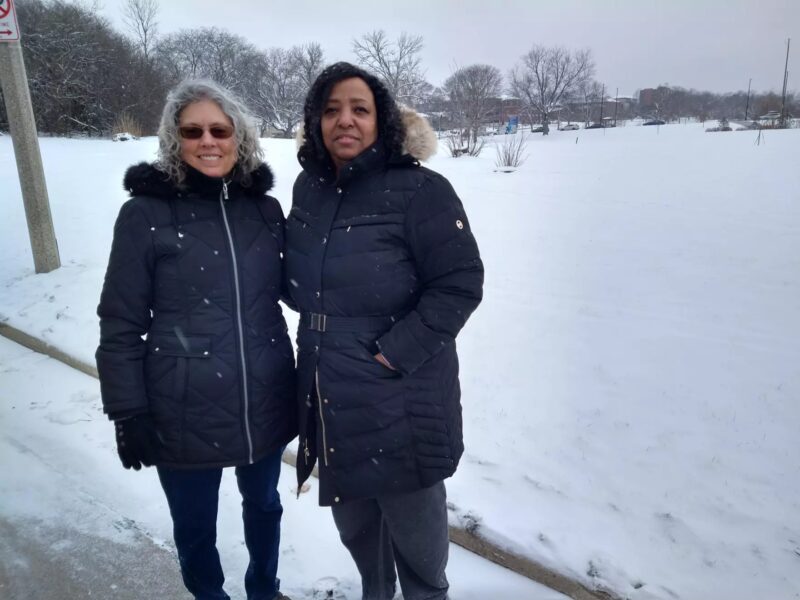Genealogists want faster action from UWM and others on Milwaukee County Poor Farm Cemetery remains
Share
Explore Our Galleries
Breaking News!
Today's news and culture by Black and other reporters in the Black and mainstream media.
Ways to Support ABHM?
By Chuck Quirmbach, WUWM 89.7 FM
By some estimates, one in six Black residents of the Milwaukee area at the time were laid to rest at these grounds.

Photo Credits: Chuck Quirmbach/WUWM
[…] At the southeast corner of the medical center, just off Wisconsin Ave., a sloping piece of undeveloped land about the size of two football fields certainly looks peaceful. But the site leaves Milwaukee resident Tiffiny Neal anything but serene.
“It’s sad, that this is the reminder I have of their sacrifices,” Neal says.
Neal is standing next to what is called Cemetery One, one of four pieces of land that made up the Milwaukee County Poor Farm Cemetery. In the late 1800s and for decades in the 1900s, it became the final resting place for thousands of poor people whose families couldn’t afford a burial in more traditional graveyards or the deceased weren’t allowed to be at those better sites — sometimes due to racism.
Neal says her Black ancestors who came to Milwaukee more than a century ago worked to create a better life for themselves and their descendants. Three of her relatives were buried at the poor farm.
By some estimates, one in six Black residents of the Milwaukee area at the time were laid to rest at these grounds.
[…]
Houston also says three of her ancestors were buried at the paupers’ site.
Houston and Neal are part of group of genealogists that want the medical center to at least put up signs honoring Cemetery One and other poor farm burial sections disturbed in recent decades by construction projects. And the two women are worried that additional development being discussed at the center would disturb more graves. The center, which includes Froedtert Hospital and the Medical College of Wisconsin, did not supply a comment or statement for this story, despite repeated requests.
Learn how they will move forward in identifying the recovered bodies
The Tulsa Race Massacre also resulted in unmarked burial grounds.









Comments Are Welcome
Note: We moderate submissions in order to create a space for meaningful dialogue, a space where museum visitors – adults and youth –– can exchange informed, thoughtful, and relevant comments that add value to our exhibits.
Racial slurs, personal attacks, obscenity, profanity, and SHOUTING do not meet the above standard. Such comments are posted in the exhibit Hateful Speech. Commercial promotions, impersonations, and incoherent comments likewise fail to meet our goals, so will not be posted. Submissions longer than 120 words will be shortened.
See our full Comments Policy here.